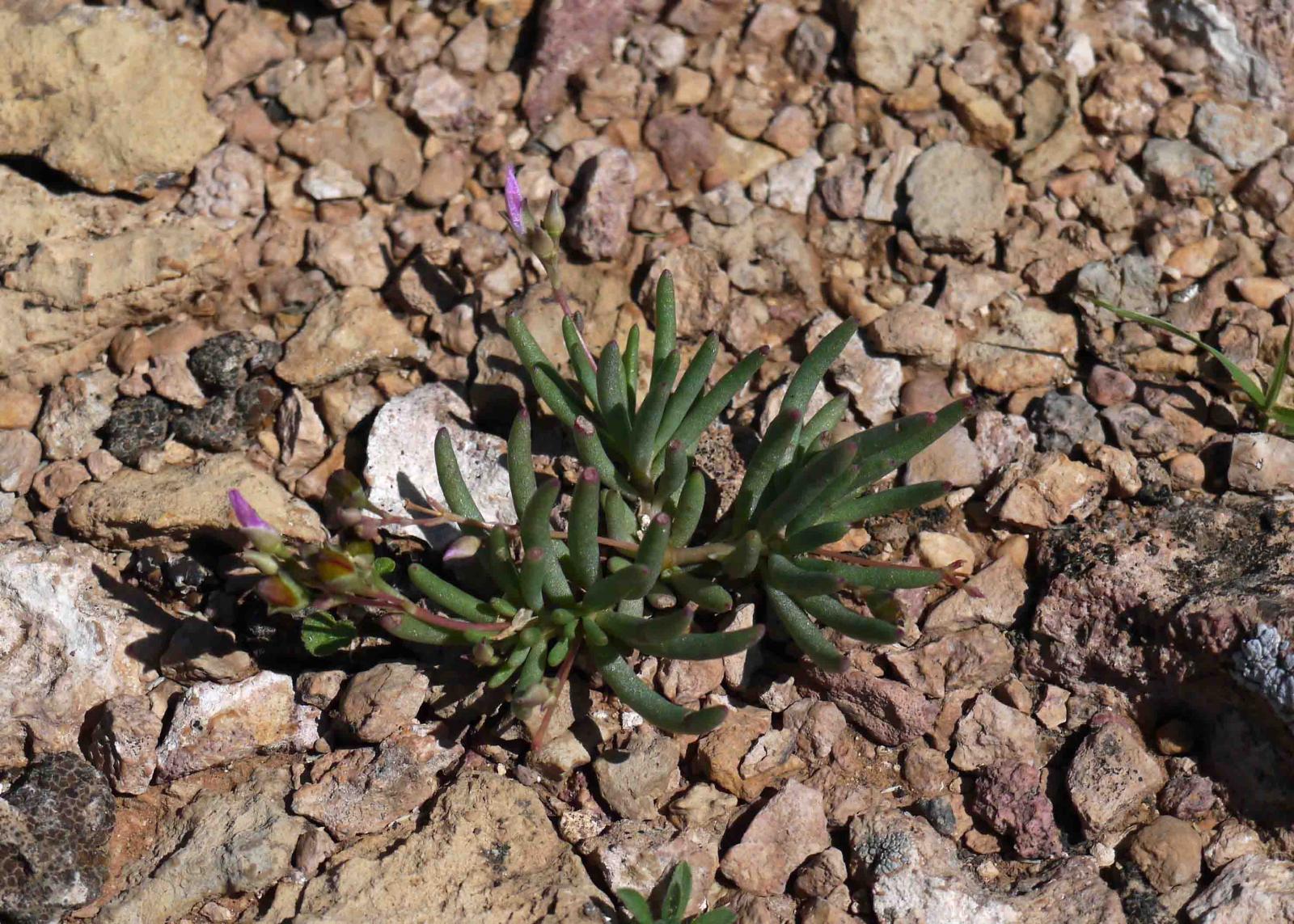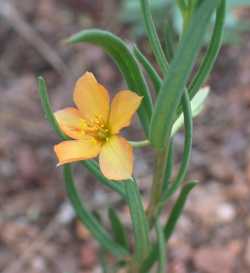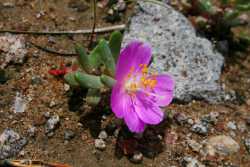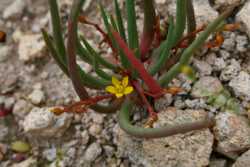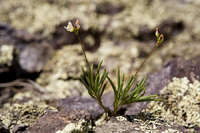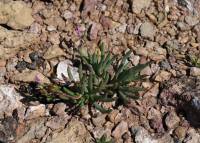Herbs, perennial, caulescent (subscapose in P. humilis), glabrous. Roots sometimes tuberous, fleshy to woody. Stems ascending to erect, simple or branching, sometimes suffrutescent. Leaves alternate or subopposite, sometimes subrosulate, petiolate or sessile, articulate at base, not clasping but sometimes with auriculate, membranous to chartaceous basal enations, attachment point round; blade terete, semiterete, or narrowly planate, 1-3 (10-20 in P. aurantiacus) mm wide, succulent (semisucculent in P. aurantiacus, P. sediformis, and P. spinescens). Inflorescences lateral and/or terminal (lateral sometimes appearing terminal due to congestion of leaves on very short stems), cymose or cymulose, not appearing secund, few- to many-flowered, or flowers solitary and axillary; peduncle very short to elongate, sometimes scapelike. Flowers pedicellate (sometimes subsessile or sessile in P. parviflorus), each opening for 2-4 hours from afternoon to early evening of a single day, sometimes facultatively cleistogamous; sepals promptly deciduous after anthesis or persistent through capsule development, distinct; petals fugacious, 5 or rarely more, distinct or sometimes basally connate; stamens 4-many, distinct or with filaments basally shortly coherent in several clusters, anther 2-locular, oblong (subglobose in P. rugospermus); gynoecium 3[-5]-carpelled, placentention free-central; style 1 [absent]; stigmas 1 or 3[-5]. Capsules longitudinally dehiscent from apex, 3-valved; valves deciduous, erect, exocarp and endocarp not evidently differentiated and not separating. Seeds many, black or brown, ± compressed, with or without ± parallel, arcuate ridges, estrophiolate, circular-reniform, small; seed coat lustrous, smooth (corrugate-rugulose in P. rugospermus), covered with pale white or gray, thin, dull, fleshy to chartaceous pellicle. x = 12.
C. S. Rafinesque (1814b) transferred Pursh´s Talinum teretifolium, which had been described earlier that year and was the only North American species then attributed to that primarily Old World genus, to the segregate genus Phemeranthus. Since then, though, most other authors have continued to recognize that species within Talinum, along with other similar and exclusively New World taxa described subsequently, as sect. Phemeranthus. However, a fairly strongly correlated set of differences in the leaf, pollen, fruit, and seed structures of these species compared with those of sect. Talinum, only two species of which are found in North America, supports their recognition at the generic level (R. Carolin 1987, 1993; M. A. Hershkovitz 1993). Complementary to the morphological evidence, recent molecular studies (M. A. Hershkovitz and E. A. Zimmer 1997, 2000; W. L. Applequist and R. S. Wallace 2001) indicate that Phemeranthus is phylogenetically distinct from Talinum.
Positive identification of Phemeranthus specimens often requires examination of both flower and fruit, including seeds (with hand lens). Fortunately, the flowers develop successively and the capsules mature rapidly after anthesis, so both flowers and fruits will be present on a given plant during most of the reproductive season.
PLANT: Perennial herbs, caulescent, glabrous.
ROOTS: fleshy to woody, sometimes tuberous.
STEMS: simple or branching, spreading to erect, very short to elongate, sometimes suffrutescent.
LEAVES: alternate or subopposite, sometimes subrosulate, sessile or petiolate, sometimes subtended by free basal enations; blades terete to narrowly planate, succulent or semisucculent.
INFLORESCENCE: in ours terminal or lateral cymes or cymules, or flowers solitary in leaf axils; peduncles sometimes scape-like.
FLOWERS: pedicellate or subsessile, sometimes sessile in P. parviflorus, each opening for 2-4 hours in the afternoon to early evening of a single day, sometimes facultatively cleistogamous in P. aurantiacus; sepals 2, distinct, deciduous or persistent through capsule dehiscence; petals 5 or rarely more, distinct or sometimes basally connate, fugacious; stamens 4-many, the filaments distinct or basally coherent in several clusters; ovary superior, 3-carpellate, the ovules many, the placentation free-central; style 1; stigma(s) 1 and subcapitate or 3 and linear.
CAPSULE: promptly loculicidal from the apex, 3-valved; exocarp and endocarp not macroscopically differentiated and not separating; valves deciduous.
SEEDS: many, small circular-reniform and compressed, smooth or with parallel arcuate ridges, black or brown, covered with white or pale gray membrane. x = 12.
NOTES: 25-30 spp. Amer. (from Greek ephemoros, living for one day, and anthos, flower). Kiger, R.W. 2001. Novon 11:319-321. Morphological and molecular data support the separation of Phemeranthus from Talinum. All of our species of this complex, except Talinum paniculatum, are placed in Phemeranthus.
REFERENCES: Allison Bair, Marissa Howe, Daniela Roth, Robin Taylor, Tina Ayers, and Robert W. Kiger., 2006, Vascular Plants of Arizona: Portulacaceae. CANOTIA 2(1): 1-22.


